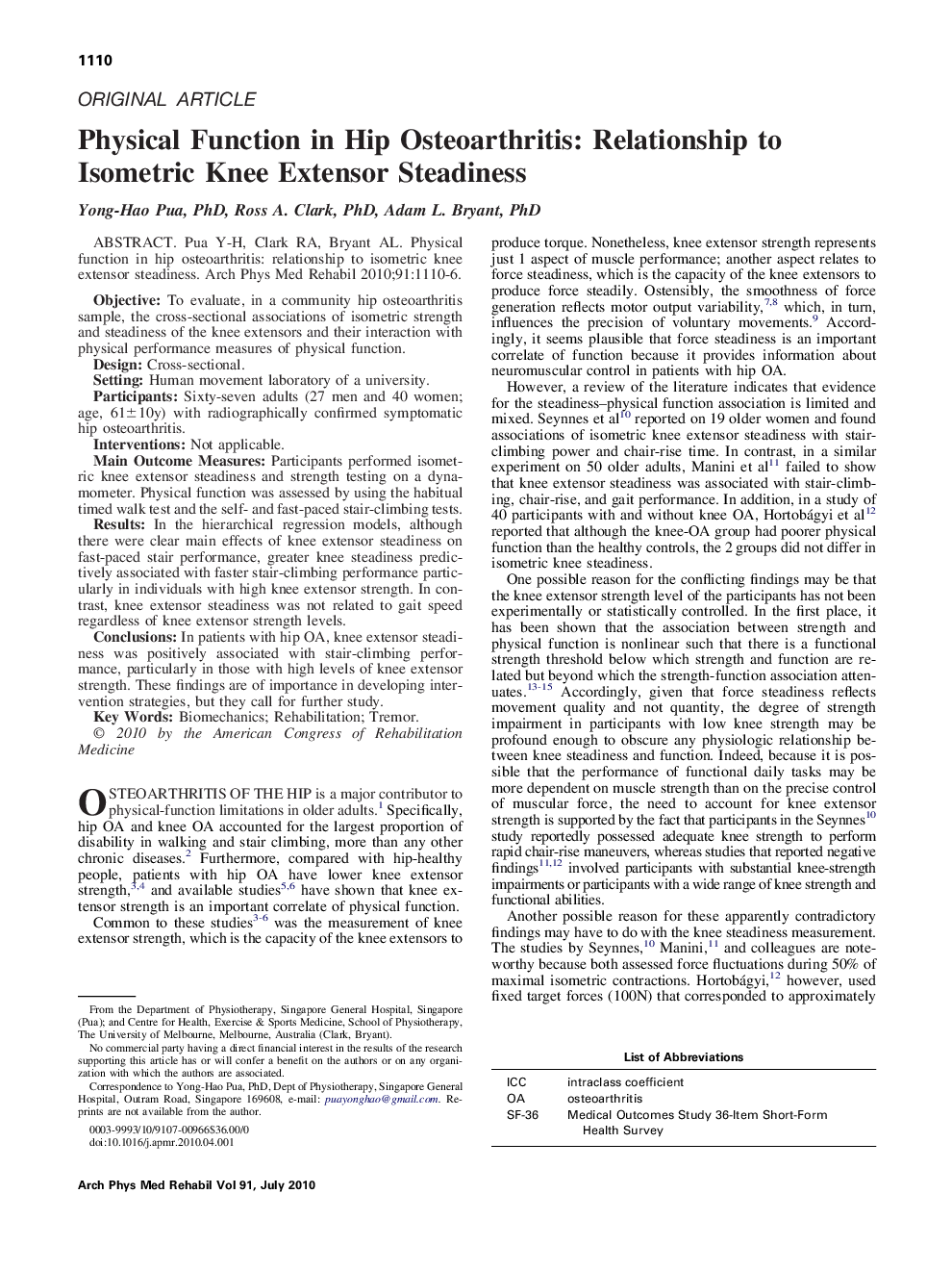| Article ID | Journal | Published Year | Pages | File Type |
|---|---|---|---|---|
| 3451054 | Archives of Physical Medicine and Rehabilitation | 2010 | 7 Pages |
Pua Y-H, Clark RA, Bryant AL. Physical function in hip osteoarthritis: relationship to isometric knee extensor steadiness.ObjectiveTo evaluate, in a community hip osteoarthritis sample, the cross-sectional associations of isometric strength and steadiness of the knee extensors and their interaction with physical performance measures of physical function.DesignCross-sectional.SettingHuman movement laboratory of a university.ParticipantsSixty-seven adults (27 men and 40 women; age, 61±10y) with radiographically confirmed symptomatic hip osteoarthritis.InterventionsNot applicable.Main Outcome MeasuresParticipants performed isometric knee extensor steadiness and strength testing on a dynamometer. Physical function was assessed by using the habitual timed walk test and the self- and fast-paced stair-climbing tests.ResultsIn the hierarchical regression models, although there were clear main effects of knee extensor steadiness on fast-paced stair performance, greater knee steadiness predictively associated with faster stair-climbing performance particularly in individuals with high knee extensor strength. In contrast, knee extensor steadiness was not related to gait speed regardless of knee extensor strength levels.ConclusionsIn patients with hip OA, knee extensor steadiness was positively associated with stair-climbing performance, particularly in those with high levels of knee extensor strength. These findings are of importance in developing intervention strategies, but they call for further study.
